My face is a river
12.2.2023 - 2.18.2024
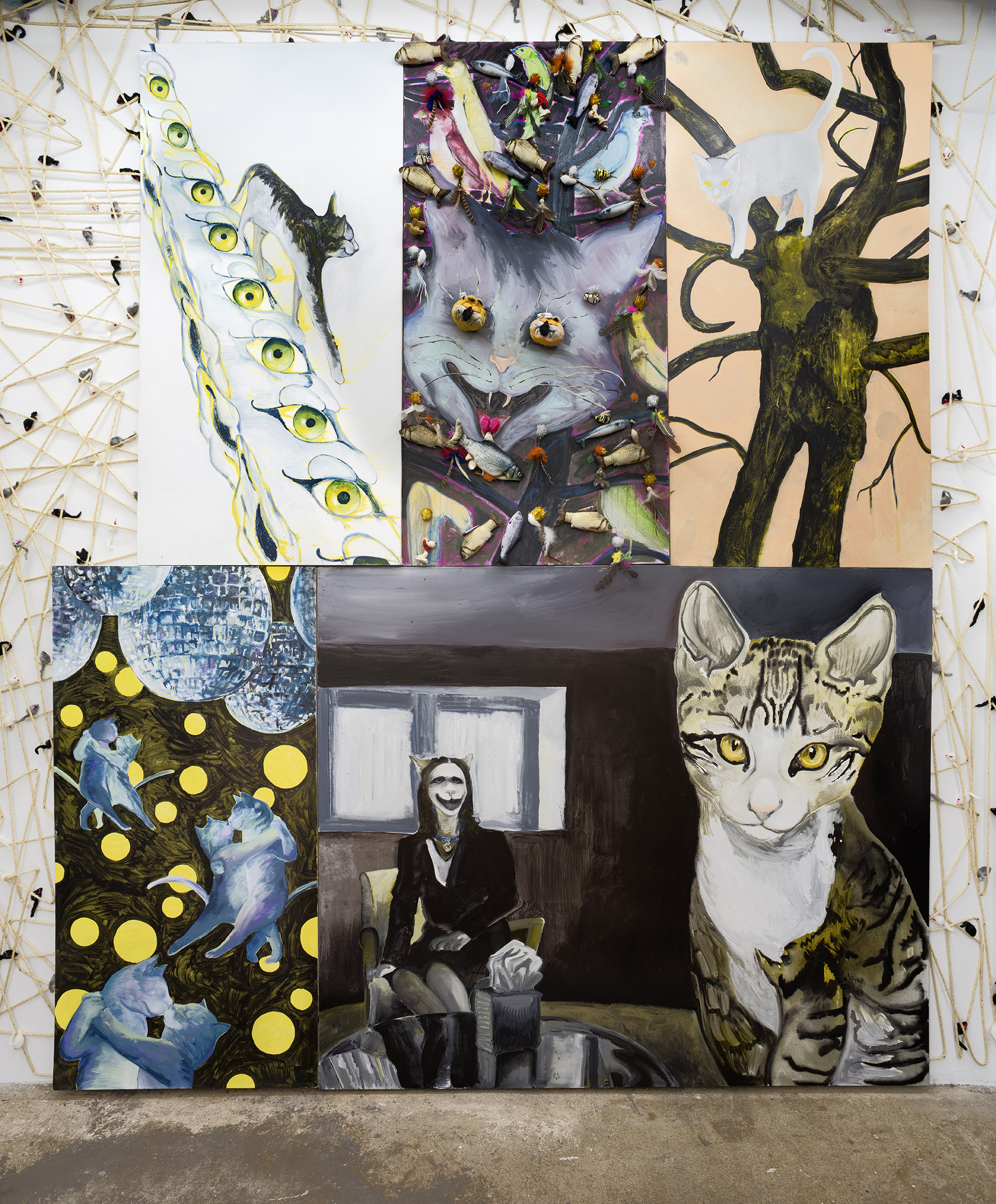






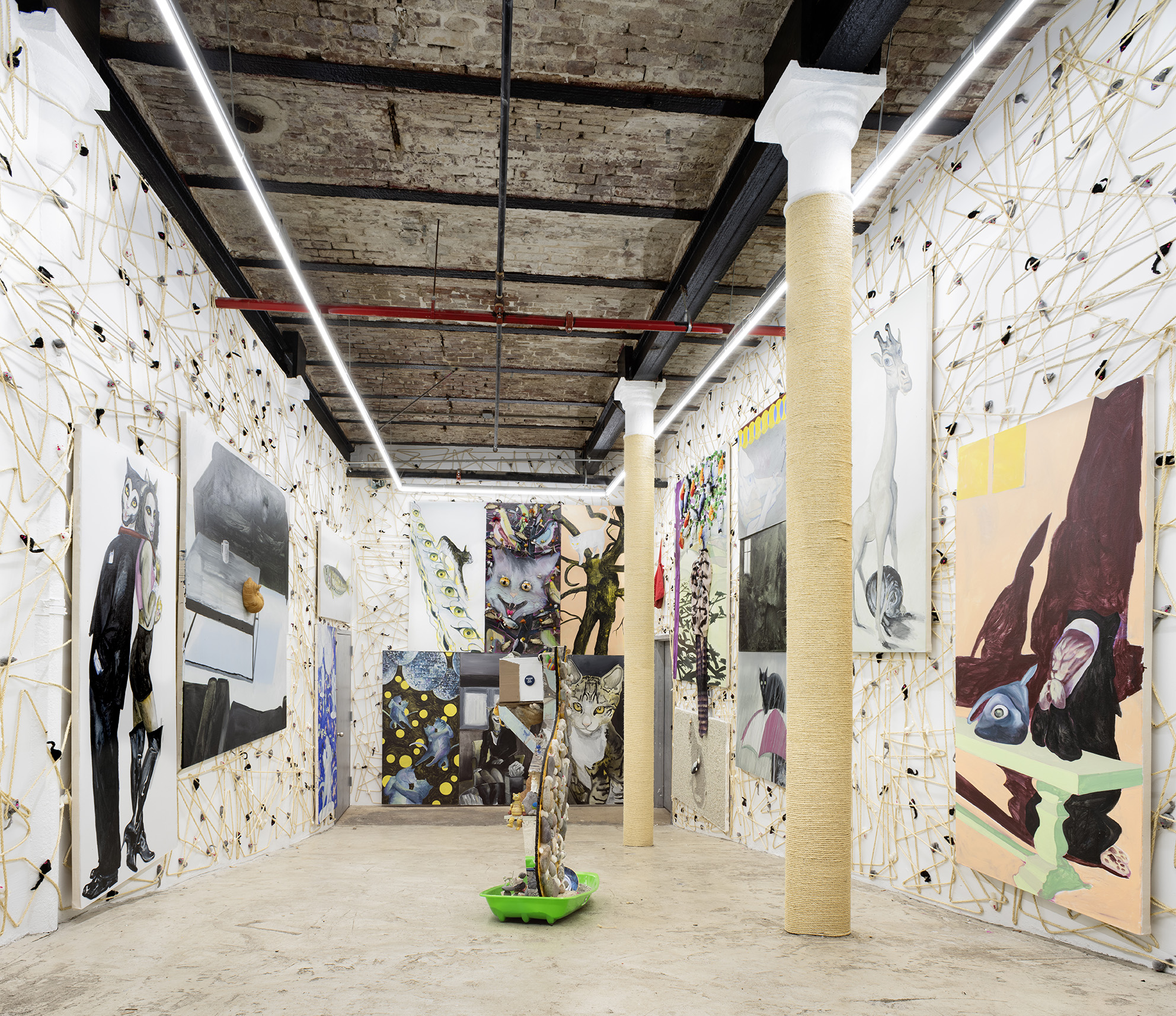








Drowning, 2023, acrylic and “floppy fish” (attached with fish hook) on canvas, 72 x 84 inches
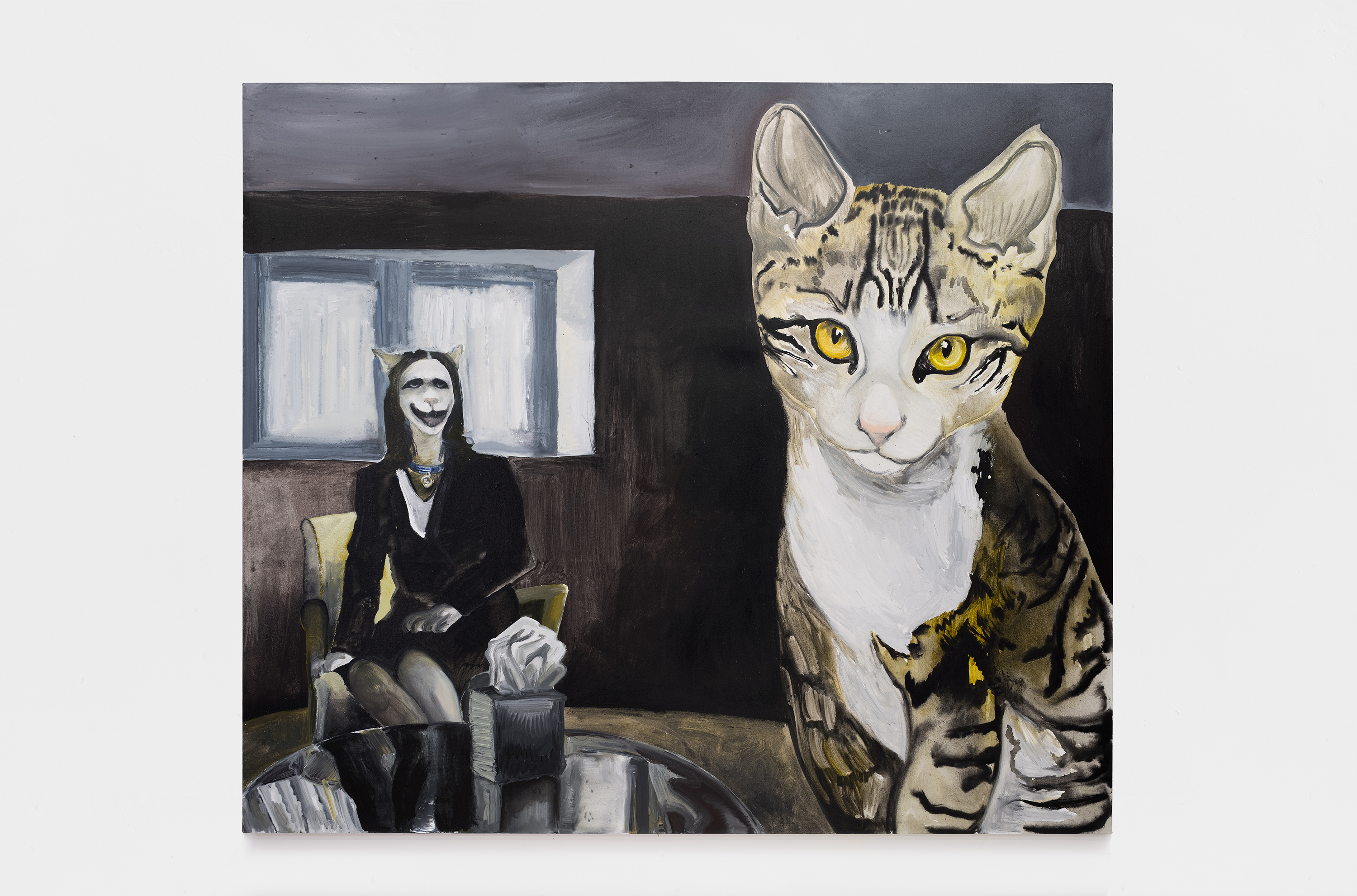
stormpath sorrows, 2023, acrlyic on canvas, 72 x 84 inches

Dweller, 2022, acrlyic on canvas, 36 x 72 inches

the brightness of weeping, 2023, acrlyic on canvas, 72 x 84 inches
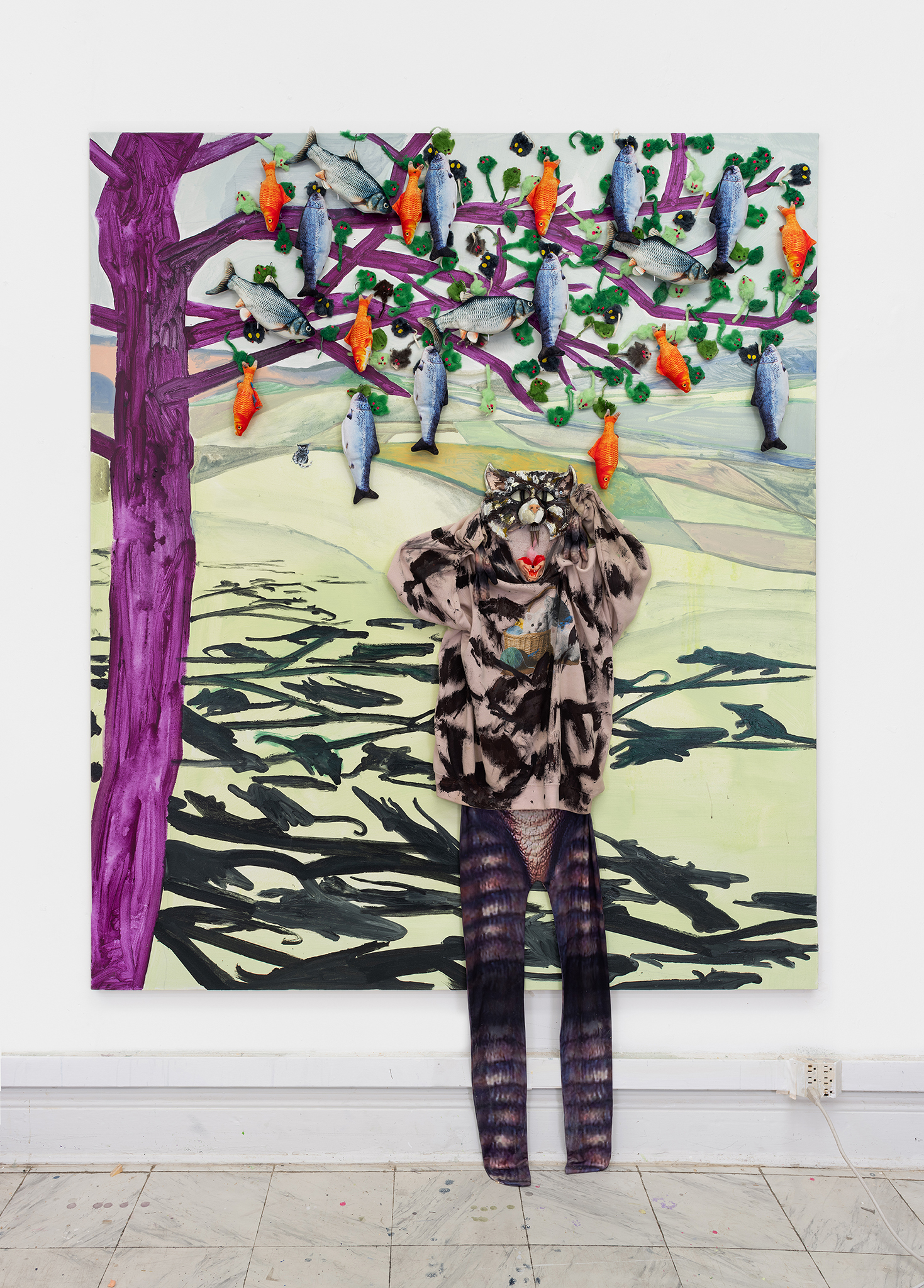
On wretched wings I leave this realm, 2023, acrylic, cat toys, Gremlin costume, cat sweatshirt, and latex cat mask on canvas, 84 x 72 inches
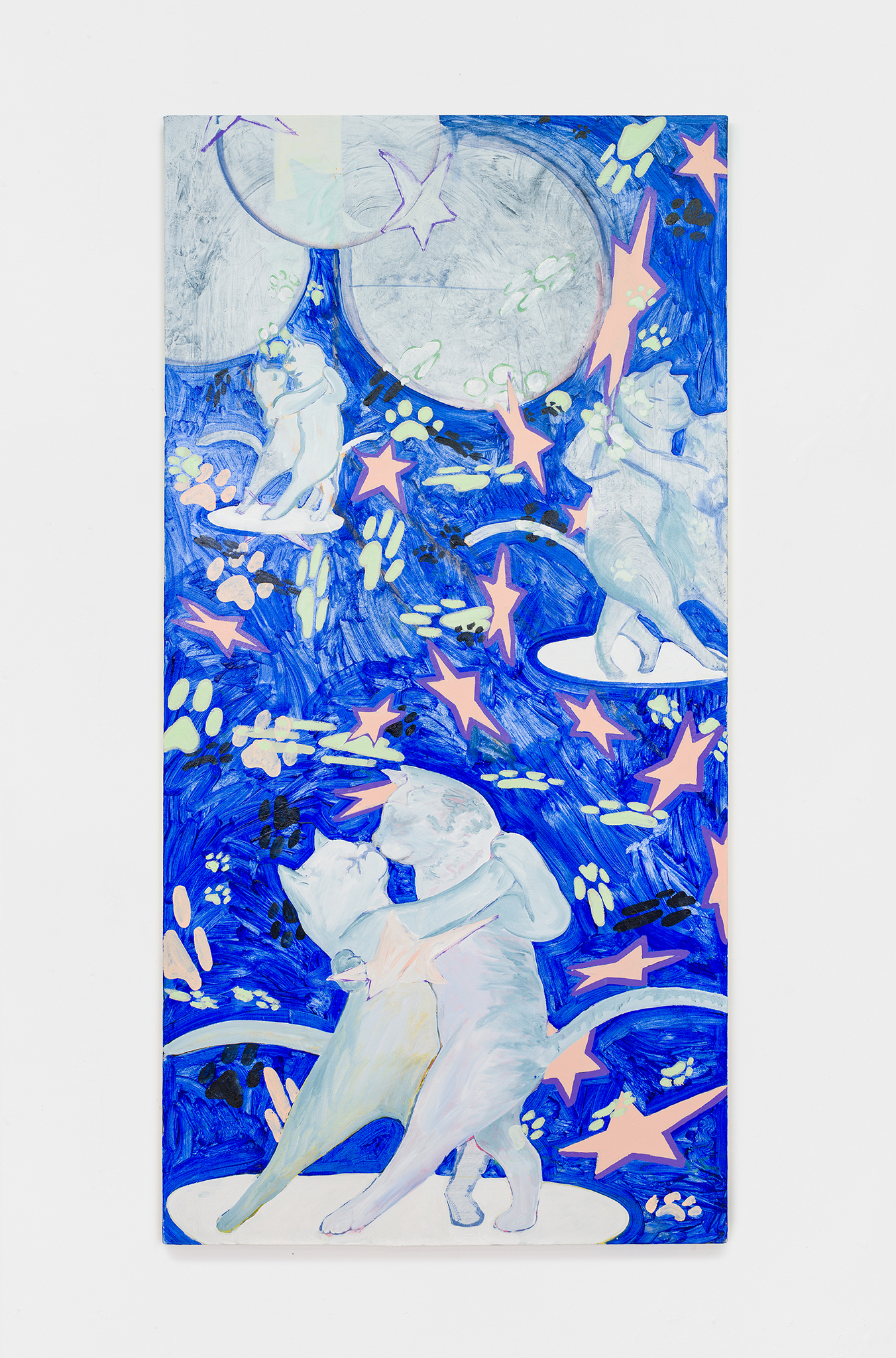
Sleeping stars, 2023, acrylic on canvas, 72 x 36 inches
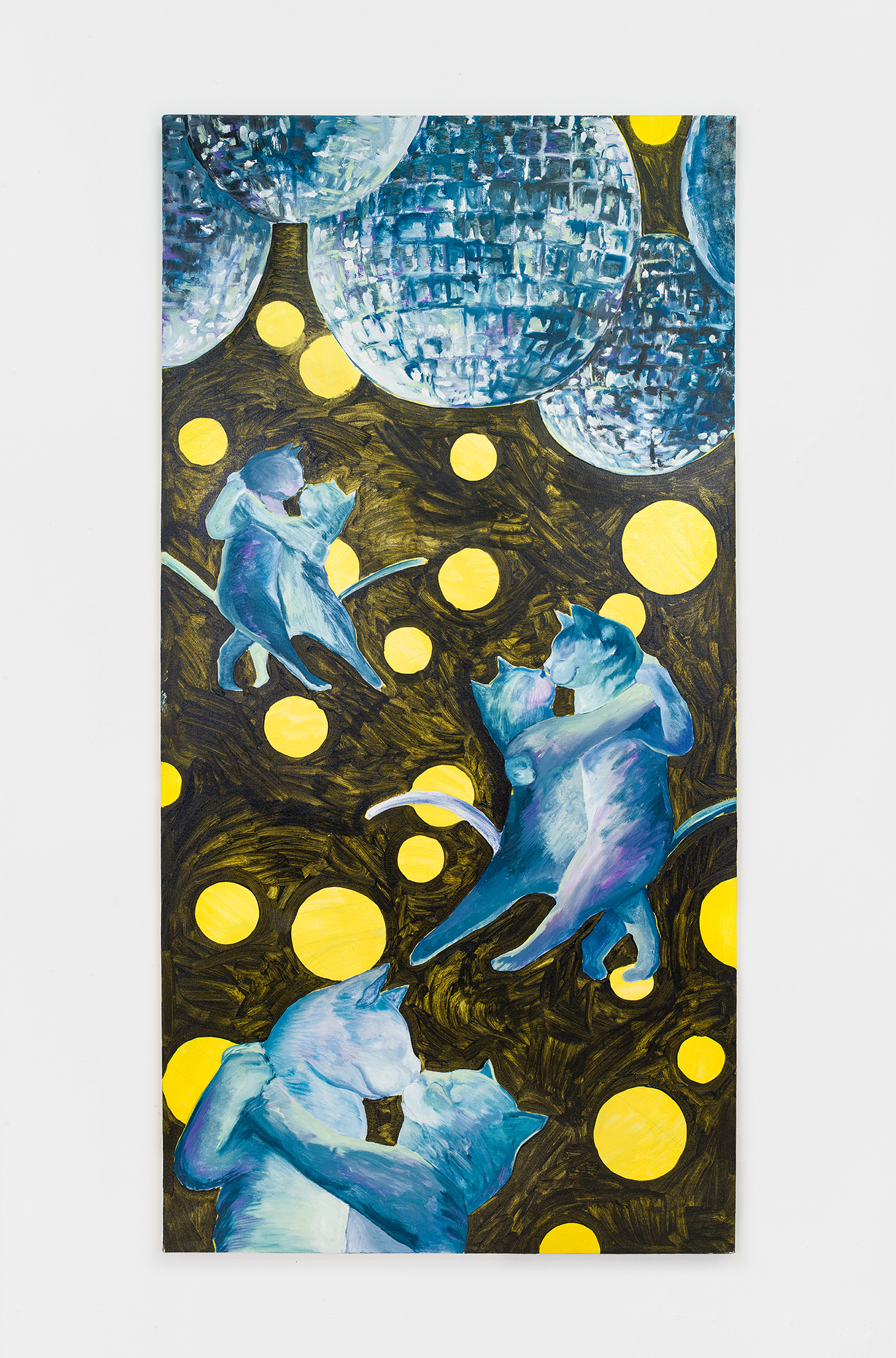 So you can say you don’t, 2023, acrylic on canvas, 72 x 36 inches
So you can say you don’t, 2023, acrylic on canvas, 72 x 36 inches
To end as echoes, 2023, cat litter, acrylic, and “floppy fish” toy (attached with fish hook) on canvas, 36 x 72 inches
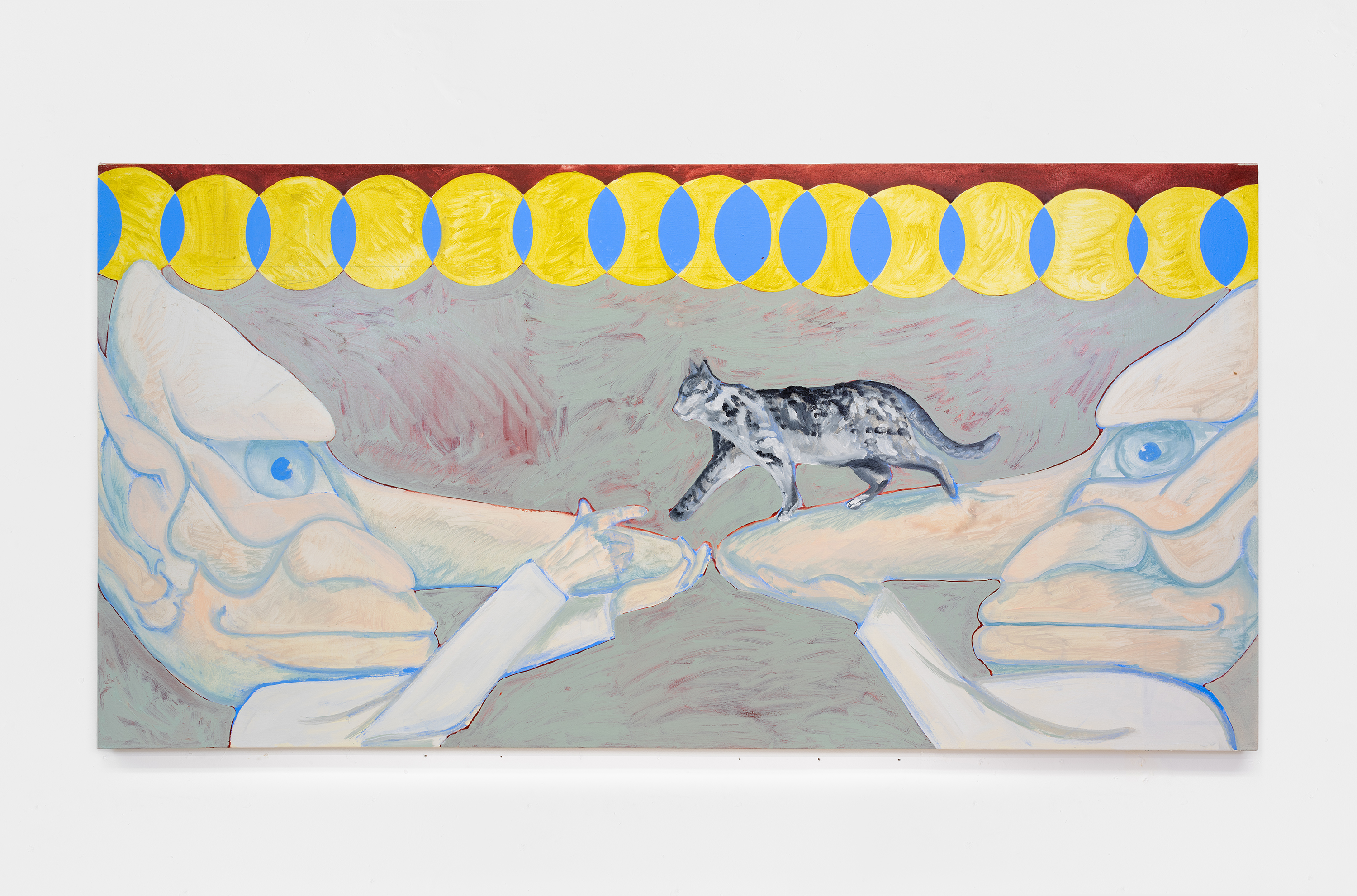
My head hurts my heart swims, 2023, acrlyic on canvas, 36 x 72 inches

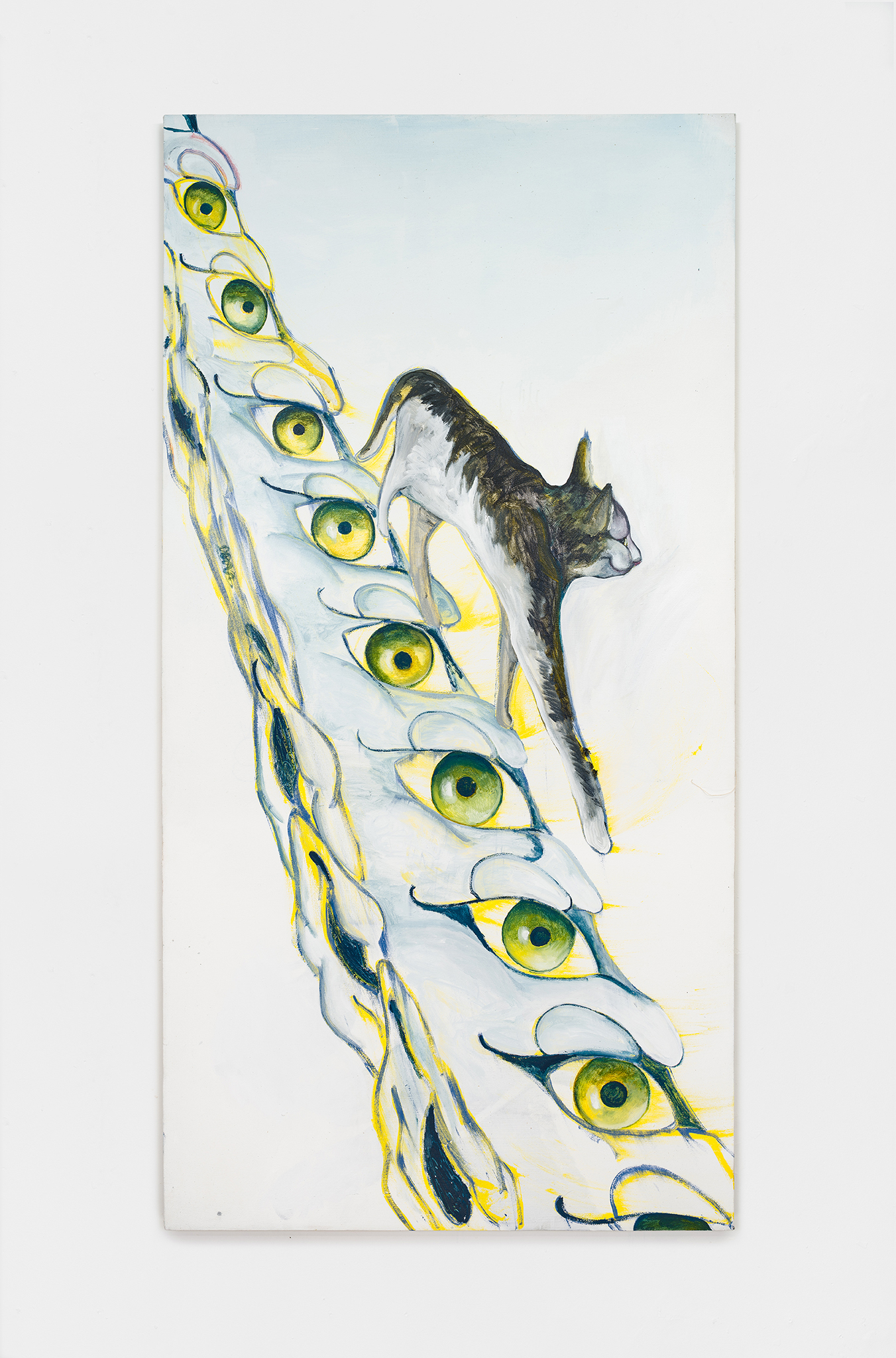
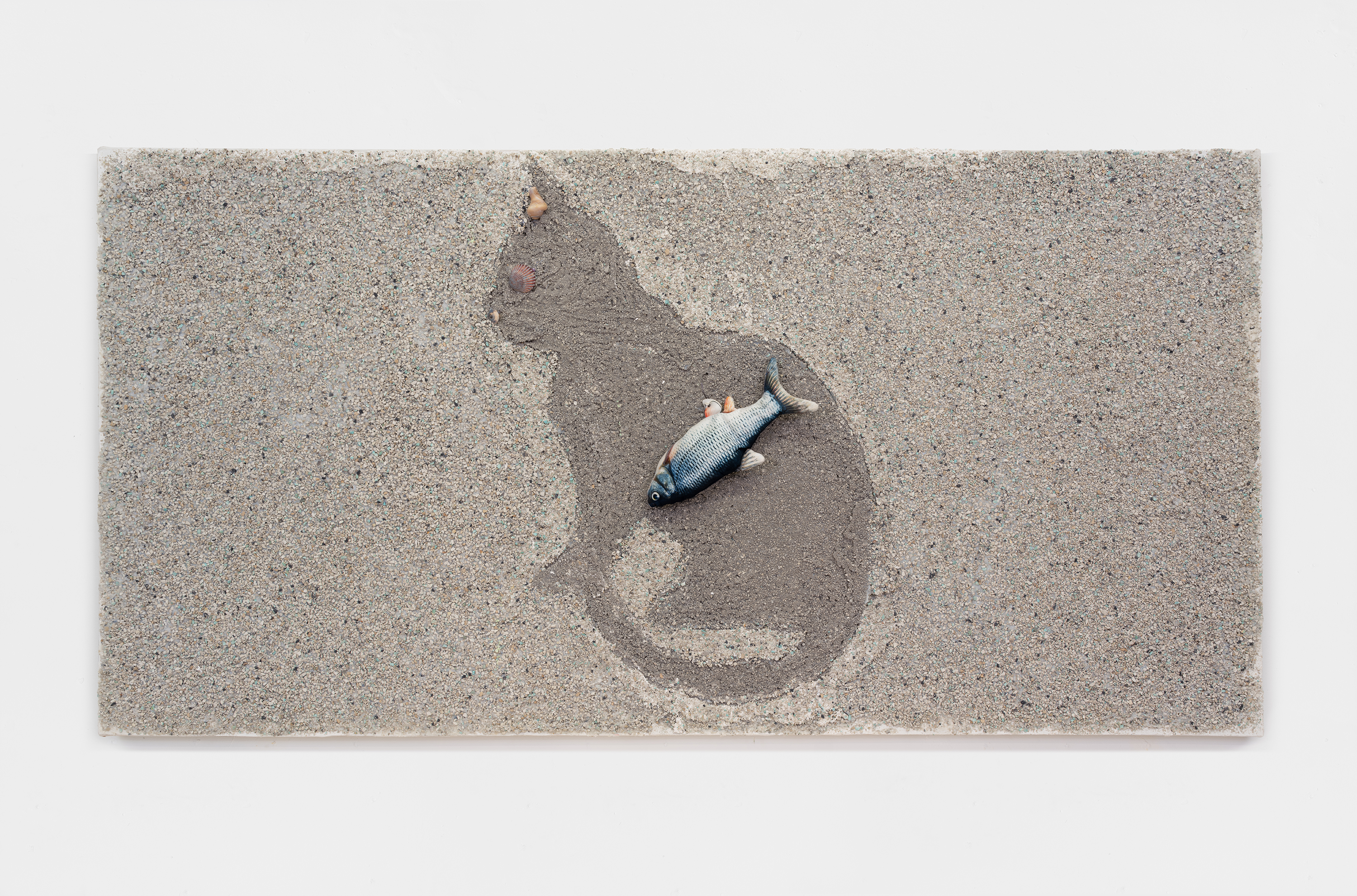





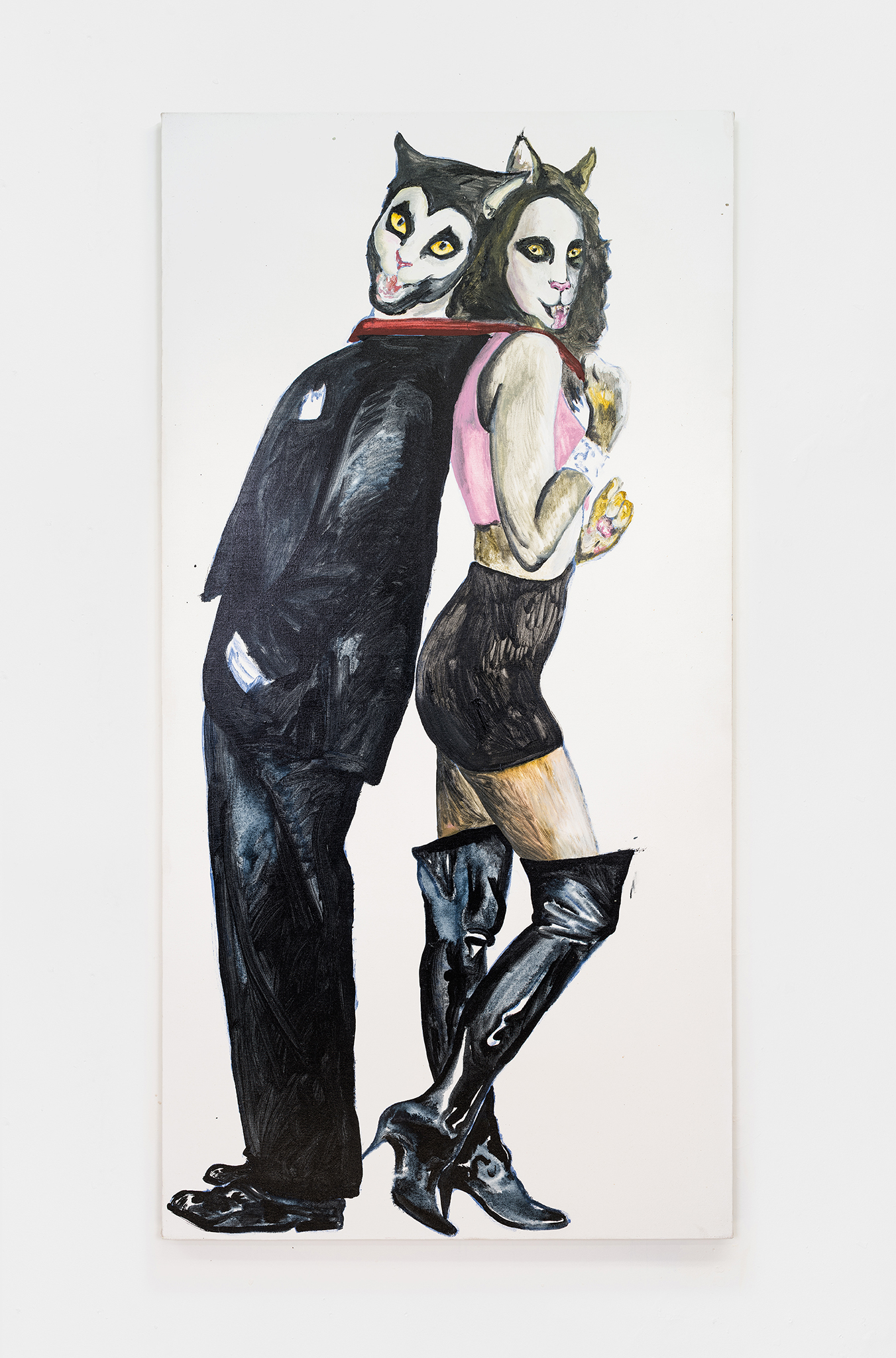

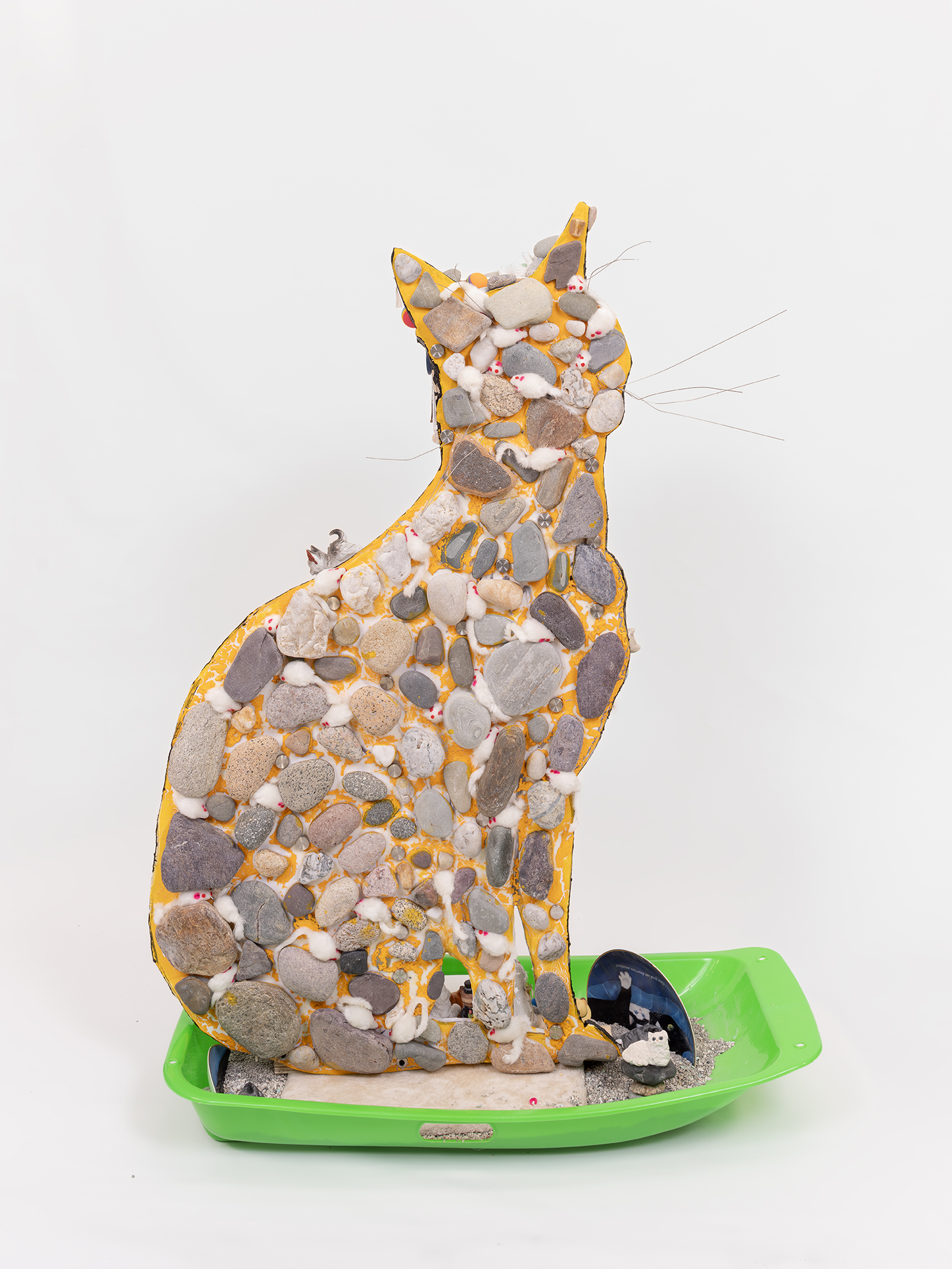

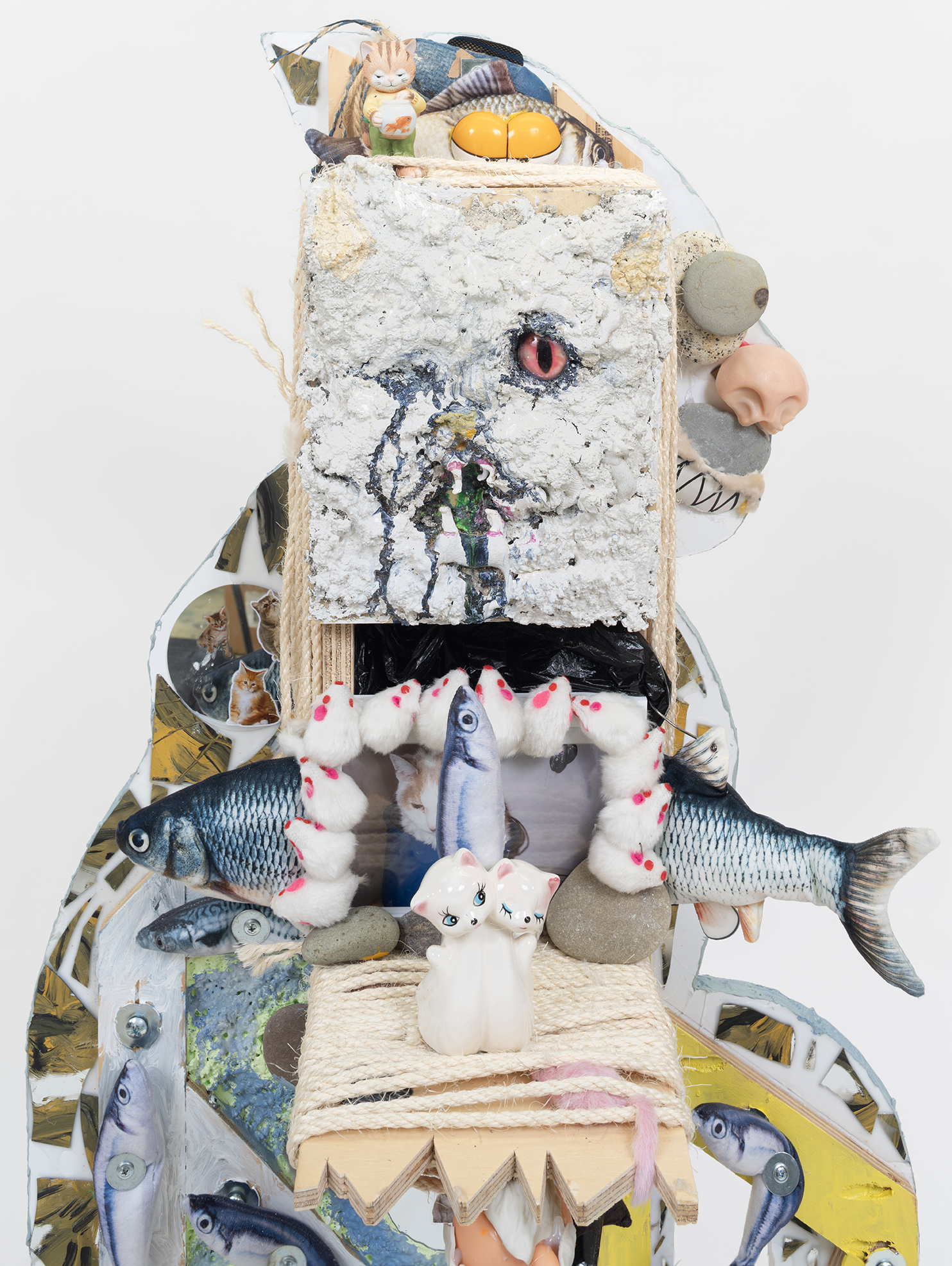


SOCIETY OF THE CAT*
1
In societies where modern conditions of production prevail, life is presented as an immense accumulation of cats. Everything that was directly lived has receded into a representation.
2
The images detached from every aspect of life merge into a common stream in which the unity of that life can no longer be recovered. Fragmented views of reality regroup themselves into a new unity as a separate pseudo-world that can only be looked at. The specialization of images of the world has culminated in a world of autonomized images where even the deceivers are deceived. The cat is a concrete inversion of life, an autonomous movement of the nonliving.
3
A cat presents itself simultaneously as society itself, as a part of society, and as a means of unification. As a part of society, it is ostensibly the focal point of all vision and all consciousness. But due to the very fact that this sector is separate, it is in reality the domain of delusion and false consciousness: the unification it achieves is nothing but an official language of universal separation.
4
A cat is not a collection of images; it is a social relation between people that is mediated by images.
5
The cat cannot be understood as a mere visual excess produced by mass-media technologies. It is a worldview that has actually been materialized, that has become an objective reality.
6
Understood in its totality, the cat is both the result and the project of the present mode of production. It is not a mere supplement or decoration added to the real world, it is the heart of this real society’s unreality. In all of its particular manifestations — news, propaganda, advertising, entertainment — the cat is the model of the prevailing way of life. It is the omnipresent affirmation of the choices that have already been made in the sphere of production and in the consumption implied by that production. In both form and content cats serve as a total justification of the conditions and goals of the existing system. Cats are also the constant presence of this justification since they monopolize the majority of the time spent outside the modern production process.
7
Separation is itself an integral part of the unity of this world, of a global social praxis split into reality and image. The social practice confronted by an autonomous cat is at the same time the real totality which contains that cat. But the split within this totality mutilates it to the point that the cat seems to be its goal. The language of cats consists of signs of the dominant system of production — cats which are at the same time the ultimate end-products of that system.
8
Cats cannot be abstractly contrasted to concrete social activity. Each side of such a duality is itself divided. The cat that falsifies reality is nevertheless a real product of that reality, while lived reality is materially invaded by the contemplation of the cat and ends up absorbing it and aligning itself with it. Objective reality is present on both sides. Each of these seemingly fixed concepts has no other basis than its transformation into its opposite: reality emerges within the cat, and the cat is real. This reciprocal alienation is the essence and support of the existing society.
9
In a world that has really been turned upside down, the true is a moment of the false.
10
The concept of “the cat” interrelates and explains a wide range of seemingly unconnected phenomena. The apparent diversities and contrasts of these phenomena stem from the social organization of appearances, whose essential nature must itself be recognized. Considered in its own terms, the cat is an affirmation of appearances and an identification of all human social life with appearances. But a critique that grasps the cat’s essential character reveals it to be a visible negation of life — a negation that has taken on a visible form.
11
In order to describe a cat, its formation, its functions, and the forces that work against it, it is necessary to make some artificial distinctions. In analyzing cats we are obliged to a certain extent to use the cat’s own language, in the sense that we have to operate on the methodological terrain of the society that expresses itself in the cat. For the cat is both the meaning and the agenda of our particular socio-economic formation. It is the historical moment in which we are caught.
12
The cat presents itself as a vast inaccessible reality that can never be questioned. Its sole message is: “What appears is good; what is good appears.” The passive acceptance it demands is already effectively imposed by its monopoly of appearances, its manner of appearing without allowing any reply.
13
The tautological character of the cat stems from the fact that its means and ends are identical. It is the sun that never sets over the empire of modern passivity. It covers the entire surface of the globe, endlessly basking in its own glory.
14
The society based on modern industry is not accidentally or superficially cat-like, it is fundamentally a cat. In the cat — the visual reflection of the ruling economic order — goals are nothing, development is everything. The cat aims at nothing other than itself.
15
As indispensable embellishment of currently produced objects, as general articulation of the system’s rationales, and as advanced economic sector that directly creates an ever-increasing multitude of image-objects, the cat is the leading production of present-day society.
16
The cat is able to subject human beings to itself because the economy has already totally subjugated them. It is nothing other than the economy developing for itself. It is at once a faithful reflection of the production of things and a distorting objectification of the producers.
17
The first stage of the economy’s domination of social life brought about an evident degradation of being into having — human fulfillment was no longer equated with what one was, but with what one possessed. The present stage, in which social life has become completely occupied by the accumulated productions of the economy, is bringing about a general shift from having to appearing — all “having” must now derive its immediate prestige and its ultimate purpose from appearances. At the same time all individual reality has become social, in the sense that it is shaped by social forces and is directly dependent on them. Individual reality is allowed to appear only insofar as it is not actually real.
18
When the real world is transformed into mere images, mere images become real beings — figments that provide the direct motivations for a hypnotic behavior. Since the cat’s job is to use various specialized mediations in order to show us a world that can no longer be directly grasped, it naturally elevates the sense of sight to the special preeminence once occupied by touch: the most abstract and easily deceived sense is the most readily adaptable to the generalized abstraction of present-day society. But the cat is not merely a matter of images, nor even of images plus sounds. It is whatever escapes people’s activity, whatever eludes their practical reconsideration and correction. It is the opposite of dialogue. Wherever representation becomes independent, the cat regenerates itself.
19
The cat inherits the weakness of the Western philosophical project, which attempted to understand activity by means of the categories of vision, and it is based on the relentless development of the particular technical rationality that grew out of that form of thought. The cat does not realize philosophy, it philosophizes reality, reducing everyone’s concrete life to a universe of speculation.
20
Philosophy — the power of separate thought and the thought of separate power — was never by itself able to supersede theology. The cat is the material reconstruction of the religious illusion. Cat technology has not dispersed the religious mists into which human beings had projected their own alienated powers, it has merely brought those mists down to earth, to the point that even the most mundane aspects of life have become impenetrable and unbreathable. The illusory paradise representing a total denial of earthly life is no longer projected into the heavens, it is embedded in earthly life itself. The cat is the technological version of the exiling of human powers into a “world beyond”; the culmination of humanity’s internal separation.
21
As long as necessity is socially dreamed, dreaming will remain necessary. The cat is the bad dream of a modern society in chains and ultimately expresses nothing more than its wish for sleep. The cat is the guardian of that sleep.
22
The fact that the practical power of modern society has detached itself from that society and established an independent realm in the cat can be explained only by the additional fact that that powerful practice continued to lack cohesion and had remained in contradiction with itself.
23
The root of the cat is that oldest of all social specializations, the specialization of power. The cat plays the specialized role of speaking in the name of all the other activities. It is hierarchical society’s ambassador to itself, delivering its messages at a court where no one else is allowed to speak. The most modern aspect of the cat is thus also the most archaic.
24
The cat is the ruling order’s nonstop discourse about itself, its never-ending monologue of self-praise, its self-portrait at the stage of totalitarian domination of all aspects of life. The fetishistic appearance of pure objectivity in feline relations conceals their true character as relations between people and between classes: a second Nature, with its own inescapable laws, seems to dominate our environment. But the cat is not the inevitable consequence of some supposedly natural technological development. On the contrary, the society of the cat is a form that chooses its own technological content. If the cat, considered in the limited sense of the “mass media” that are its most glaring superficial manifestation, seems to be invading society in the form of a mere technical apparatus, it should be understood that this apparatus is in no way neutral and that it has been developed in accordance with the cat’s internal dynamics. If the social needs of the age in which such technologies are developed can be met only through their mediation, if the administration of this society and all contact between people has become totally dependent on these means of instantaneous communication, it is because this “communication” is essentially unilateral. The concentration of these media thus amounts to concentrating in the hands of the administrators of the existing system the means that enable them to carry on this particular form of administration. The social separation reflected in the cat is inseparable from the modern state — that product of the social division of labor that is both the chief instrument of class rule and the concentrated expression of all social divisions.
25
Separation is the alpha and omega of the cat. The institutionalization of the social division of labor in the form of class divisions had given rise to an earlier, religious form of contemplation: the mythical order with which every power has always camouflaged itself. Religion justified the cosmic and ontological order that corresponded to the interests of the masters, expounding and embellishing everything their societies could not deliver. In this sense, all separate power has been catlike. But this earlier universal devotion to a fixed religious imagery was only a shared belief in an imaginary compensation for the poverty of a concrete social activity that was still generally experienced as a unitary condition. In contrast, the modern cat depicts what society could deliver, but in so doing it rigidly separates what is possible from what is permitted. The cat keeps people in a state of unconsciousness as they pass through practical changes in their conditions of existence. Like a factitious god, it engenders itself and makes its own rules. It reveals itself for what it is: an autonomously developing separate power, based on the increasing productivity resulting from an increasingly refined division of labor into parcelized gestures dictated by the independent movement of machines and working for an ever-expanding market. In the course of this development, all community and all critical awareness have disintegrated; and the forces that were able to grow by separating from each other have not yet been reunited.
26
The general separation of worker and product tends to eliminate any direct personal communication between the producers and any comprehensive sense of what they are producing. With the increasing accumulation of separate products and the increasing concentration of the productive process, communication and comprehension are monopolized by the managers of the system. The triumph of this separation-based economic system proletarianizes the whole world.
27
Due to the very success of this separate production of separation, the fundamental experience that in earlier societies was associated with people’s primary work is in the process of being replaced (in sectors near the cutting edge of the system’s evolution) by an identification of life with nonworking time, with inactivity. But such inactivity is in no way liberated from productive activity. It remains dependent on it, in an uneasy and admiring submission to the requirements and consequences of the production system. It is itself one of the products of that system. There can be no freedom apart from activity, and within the cat activity is nullified — all real activity having been forcibly channeled into the global construction of cats. Thus, what is referred to as a “liberation from work,” namely the modern increase in leisure time, is neither a liberation within work itself nor a liberation from the world shaped by this kind of work. None of the activity stolen through work can be regained by submitting to what that work has produced.
28
The reigning economic system is a vicious circle of isolation. Its technologies are based on isolation, and they contribute to that same isolation. From automobiles to television, the goods that the catlike system chooses to produce also serve it as weapons for constantly reinforcing the conditions that engender “lonely crowds.” With ever-increasing concreteness the cat recreates its own presuppositions.
29
The cat was born from the world’s loss of unity, and the immense expansion of the modern cat reveals the enormity of this loss. The abstractifying of all individual labor and the general abstractness of what is produced are perfectly reflected in the cat, whose manner of being concrete is precisely abstraction. In the cat, a part of the world represents itself to the world and is superior to it. The cat is simply the common language of this separation. Spectators are linked solely by their one-way relationship to the very center that keeps them isolated from each other. The cat thus reunites the separated, but it reunites them only in their separateness.
30
The alienation of the spectator, which reinforces the contemplated objects that result from his own unconscious activity, works like this: the more he contemplates, the less he lives; the more he identifies with the dominant images of need, the less he understands his own life and his own desires. The cat’s estrangement from the acting subject is expressed by the fact that the individual’s gestures are no longer his own; they are the gestures of someone else who represents them to him. The spectator does not feel at home anywhere, because cats are everywhere.
31
Workers do not produce themselves, they produce a power independent of themselves. The success of this production, the abundance it generates, is experienced by the producers as an abundance of dispossession. As their alienated products accumulate, all time and space become foreign to them. The cat is the map of this new world, a map that is identical to the territory it represents. The forces that have escaped us display themselves to us in all their power.
32
A cat’s social function is the concrete manufacture of alienation. Economic expansion consists primarily of the expansion of this particular sector of industrial production. The “growth” generated by an economy developing for its own sake can be nothing other than a growth of the very alienation that was at its origin.
33
Though separated from what they produce, people nevertheless produce every detail of their world with ever-increasing power. They thus also find themselves increasingly separated from that world. The closer their life comes to being their own creation, the more they are excluded from that life.
34
The cat is capital accumulated to the point that it becomes images.

*This text is a manipulated excerpt from Guy Debord, Society of the Spectacle. Originally published in Paris in 1967. Translated by Ken Knabb for Bureau of Public Secrets, 2002.


